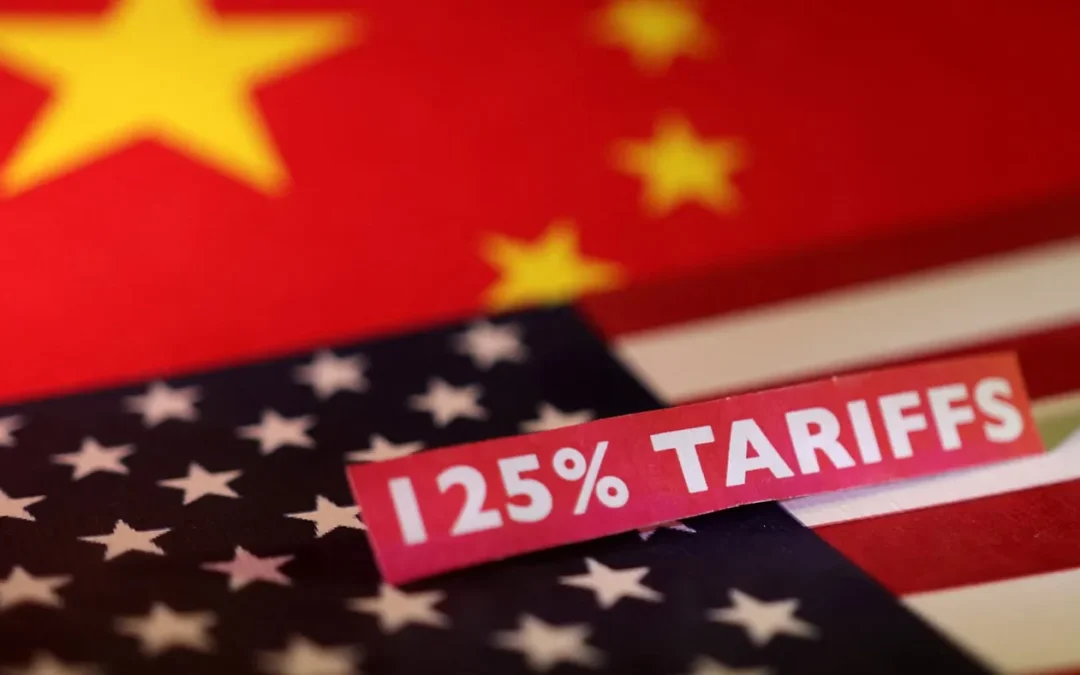Earlier this month, financial markets were shaken by a dramatic announcement from President Trump. On April 2nd, in what the White House dubbed “Liberation Day,” the US government introduced a sweeping new tariff regime. A universal 10% tax was placed on all imports, alongside aggressive “reciprocal” duties aimed at countries with large trade surpluses with the United States. China faced the harshest terms, with an effective tariff rate of 54%, while long-standing allies like the EU, UK, and Japan were also caught in the crossfire.
The reaction from markets was immediate. By April 3rd, US equities plunged. The Nasdaq fell nearly 6%, the S&P 500 dropped close to 5%, and European stocks slipped around 2%. In Asia, Vietnam’s market lost 6% in a single day, Japan dropped 3%, and even Chinese markets hesitated. Uncertainty surged. Government bonds rallied, the US dollar weakened, and anxiety took over investor sentiment.
Markets remained uneasy for the following days. Talk of a trade war dominated the headlines, and concerns about global growth mounted. Still, in moments like these, experienced investors often begin looking past the noise. Volatility, as uncomfortable as it is, has always been a part of investing. Sometimes it’s not about reacting but about staying grounded in what you’re trying to achieve long term.
Then came another twist. On April 9th, President Trump hit pause on the some new tariffs. The mood shifted. Markets began to recover, and the sense of panic started to ease. It was a timely reminder of how quickly sentiment can turn and how markets often move faster than the news cycle.
On April 10th, China responded by announcing it would raise retaliatory tariffs on US goods to 125%. The new tariffs are set to take effect on Saturday. Interestingly, China also signalled it wouldn’t continue responding tit-for-tat if the US escalates further, suggesting a shift in its approach. According to Beijing, at these levels, American imports simply aren’t viable so any future US tariffs may just be ignored altogether.
Despite this, markets continued to rebound. The sharp losses from earlier in the month began to unwind. And with it came a broader point worth remembering: market swings like these, while unsettling, are part of the journey. Corrections of 10% or more happen almost annually. Larger drops have happened before, and they’ll happen again. What matters is how you respond.
Investing isn’t about reacting to headlines, it’s about having a clear plan and the discipline to stick with it. Volatility grabs attention, but the real damage often comes when short-term emotion leads to long-term mistakes. A well-diversified portfolio, one designed around your goals, your time horizon, and your tolerance for risk can help you navigate periods like this with more confidence and less stress.
Financial services firms and advisors build portfolios to be resilient. That means balancing exposure to global companies, selecting sectors that tend to hold up under pressure, and using fixed income assets to help smooth out the ride. More than anything, strong portfolios are built around people. Success in investing isn’t about guessing what’s coming next it’s about being ready for whatever comes next.
Too often, people respond to uncertainty by reaching for quick fixes. One analogy that rings true is: reducing inflation by raising interest rates is like wielding a blunt axe at a knife. The same goes for portfolio decisions reacting too broadly or too quickly can do more harm than good. It’s about staying thoughtful and focused, not being swept up by the noise.
So when the markets shake, the better question isn’t “What’s happening out there?” It’s “Is my plan still aligned with what I want to achieve?” If it is, the right move might be to do nothing at all. If it isn’t, that’s the time to adjust, with care, not panic.
The rapid policy shift, the market sell-off, the walk-back, and the signs of recovery all happened within days. For those who stayed invested, calm is beginning to return. For those who stepped out in fear, the bounce may already be passing them by.
Volatility feels uncomfortable but it’s often when real opportunity begins. The most meaningful gains aren’t always made when things feel safe. They’re made by those who stay the course, even when the path gets bumpy. In the end, markets rise and fall. But your plan, when it’s built with purpose, should rise above it all.

